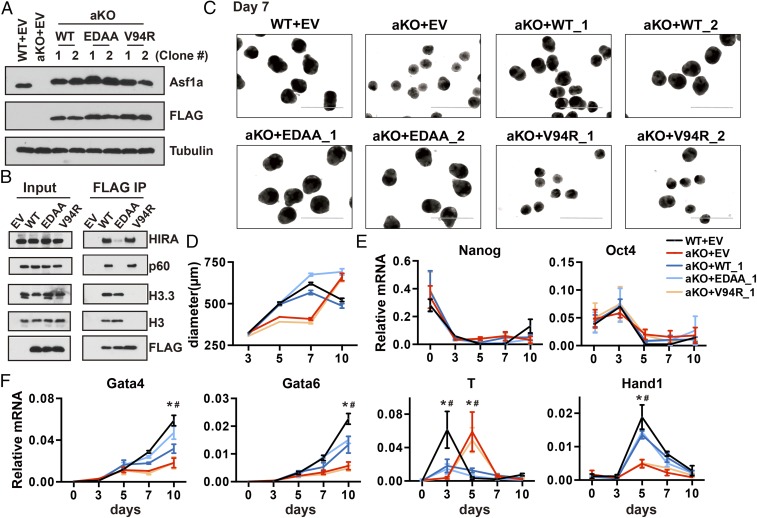Fig. 5.
The Asf1a–histone interaction is important for the induction of gene transcription during differentiation. (A) Analysis of the exogenously expressed Asf1a and mutants in Asf1a-KO ES cells. “WT” indicates FLAG-tagged WT Asf1a; “EDAA” indicates Asf1a (E36A, D37A, indicated as EDAA), and “V94R” indicates Asf1a (V94R). Two independent lines were analyzed by using Western blot and compared with endogenous Asf1a level. (B) Analysis of interactions of Asf1a and Asf1a mutants with histone H3 and chaperones HIRA and CAF-1 (p60). Asf1a-KO cells expressing FLAG-tagged WT or Asf1a mutants were immunoprecipitated with M2 beads, and coimmunoprecipitated proteins were analyzed by Western blot. (C and D) Representative images of day 7 EBs (C) and the average size of EBs formed from ES cells expressing WT Asf1a and Asf1a mutants (D). Two independent rescue lines were analyzed, and the results of another line are shown in SI Appendix, Fig. S5A. (Scale bar: 1,000 µm.) (E and F) RT-PCR analysis of pluripotent (E) and four lineage-specific genes (F) of ES clones expressing WT or mutant Asf1a during differentiation. The expression of additional germ-layer marks and the expression results obtained from another independent line are shown in SI Appendix, Fig. S5 B and C [*P < 0.05, (WT+EV) vs. (aKO+EV); #P < 0.05 (WT+EV) vs. (aKO+V94R)].

